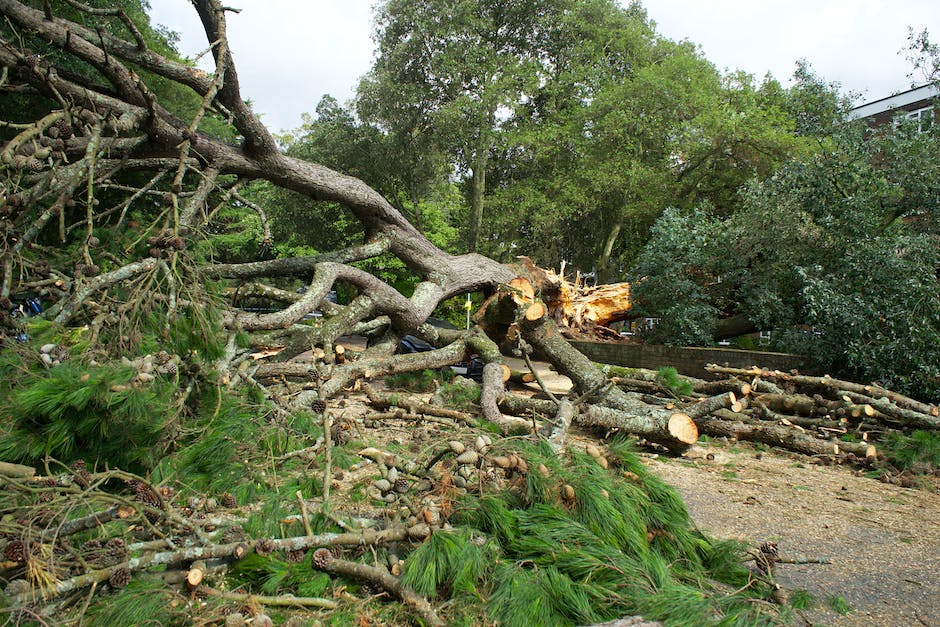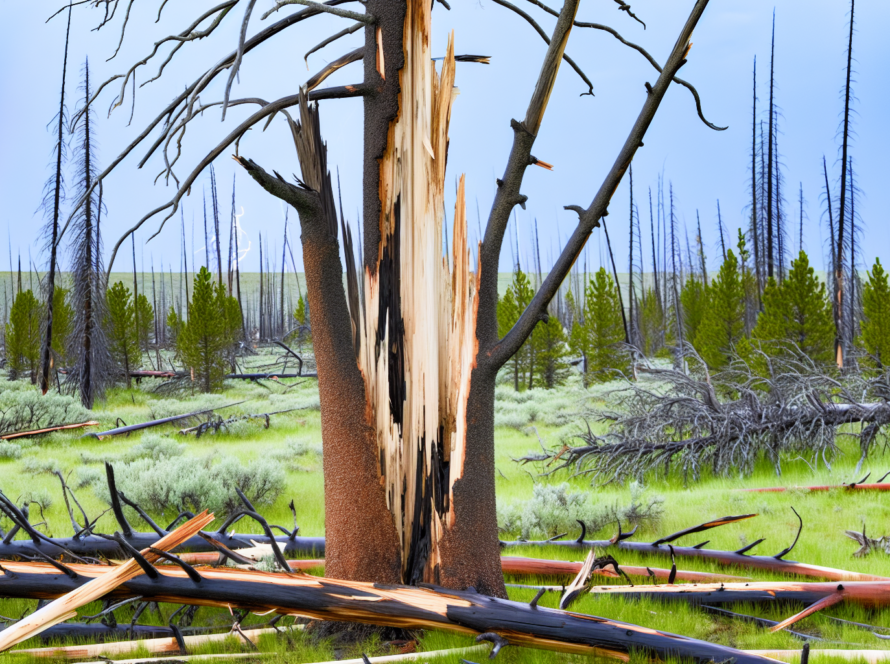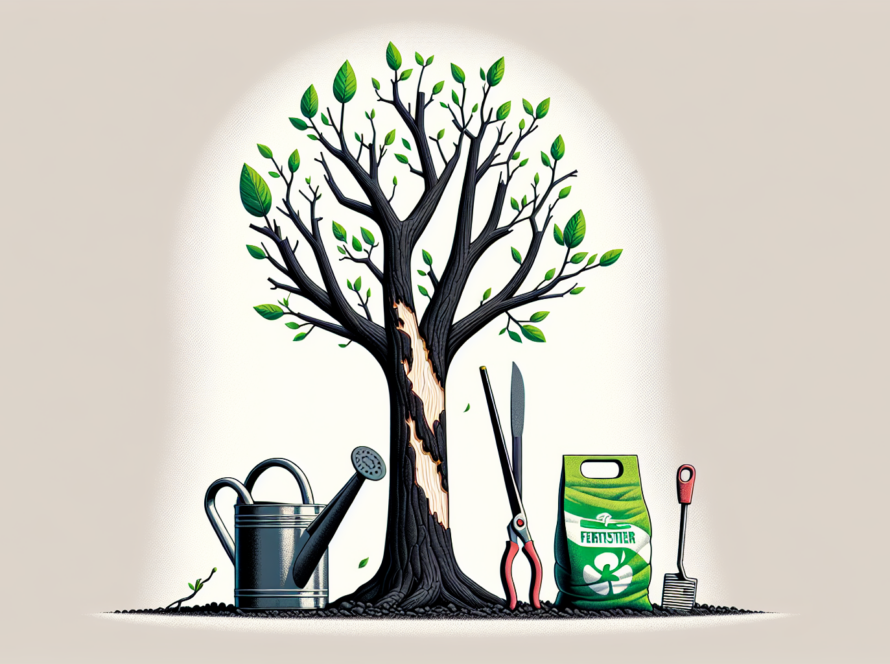As high-end homeowners, we take great pride in our meticulously designed landscapes and majestic trees. However, severe weather can strike at any moment, leaving us with tree storm damage that tests our patience and resilience. Fortunately, there are steps we can take to handle this unfortunate event with grace and efficiency.
From assessing the damage to hiring the right professionals, this ultimate guide provides valuable tips to help you navigate through the aftermath of a tree-storm disaster. Whether it’s a fallen branch or a completely uprooted tree, we’ve got you covered. Say goodbye to the stress and headaches of dealing with tree storm damage as we equip you with the necessary knowledge and resources to preserve the beauty and safety of your high-end property.
Get ready to handle anything mother nature throws your way like a true expert.

Emergency Measures for High-End Homeowners – Tree Storm Damage
As a high-end homeowner, being prepared for tree storm damage is not just about protecting your property; it’s also about safeguarding your family and loved ones. Having a well-thought-out emergency preparedness plan in place can make a significant difference when faced with severe weather conditions. One essential step is to create a comprehensive emergency kit that includes items such as flashlights, extra batteries, first aid supplies, and non-perishable food and water. Ensure that your emergency kit is easily accessible and that all family members are aware of its location.
In addition to preparing an emergency kit, it’s crucial to establish a designated safe area within your home where you and your family can seek shelter during a storm. This safe area should be located in an interior room on the lowest level of your home, away from windows and exterior walls. Consider reinforcing this space to provide added protection during severe weather events.
By proactively planning for emergencies and educating your family on emergency procedures, you can minimize the potential risks associated with tree storm damage. Remember, preparedness is key to ensuring the safety and well-being of your loved ones and property during adverse weather conditions.
Protecting Trees: Essential Tips and Techniques
Protecting your trees from storm damage goes beyond aesthetic considerations; it is essential for the overall health and longevity of your landscape. Regular tree trimming and pruning play a vital role in reducing the risk of branches breaking during storms. By removing dead or overhanging branches, you can enhance the structural integrity of your trees and mitigate the chances of storm-related damage.
Regular tree inspections are also crucial in identifying potential issues such as disease, pest infestations, or structural weaknesses that could make trees more vulnerable to storm damage. Look for signs of decay, cracks, or abnormal lean in tree trunks that may indicate underlying issues. If you notice any concerning signs, consult with a professional arborist to assess the health of your trees and recommend appropriate care strategies.
Moreover, investing in preventative measures such as cabling and bracing for mature or weak branches can provide additional support and stability during inclement weather. These techniques can help reduce the risk of branches falling and causing damage to your property or surrounding structures. By prioritizing tree protection and maintenance, you can enhance the resilience of your trees and minimize the potential impact of storms on your landscape.
Implementing Preventative Measures for Tree Care
Preventing tree storm damage starts with proactive tree care and maintenance practices that promote the overall health and stability of your trees. Adequate watering, especially during dry periods, is essential for supporting tree growth and resilience to environmental stressors. Mulching around the base of trees can help conserve soil moisture, regulate soil temperature, and reduce weed competition, promoting optimal tree health.
In addition to watering and mulching, regular fertilization can provide trees with essential nutrients needed for growth and development. Conduct a soil test to determine the specific nutritional requirements of your trees and apply fertilizers accordingly. Furthermore, consider incorporating organic materials into the soil to improve its structure and fertility, assisting in the long-term health of your trees.
Implementing lightning protection systems for tall or mature trees is another crucial preventative measure to minimize the risk of lightning-related damage during storms. These systems redirect electrical currents from lightning strikes safely into the ground, reducing the likelihood of tree damage or fires. By investing in lightning protection, you can protect your trees and surrounding property from the destructive effects of lightning strikes.
Restoration Tips for Storm-Damaged Trees
In the aftermath of a storm, assessing and addressing tree damage promptly is essential to facilitate the recovery and rejuvenation of your landscape. Begin by clearing debris and fallen branches from around the base of the tree to prevent further damage and allow for safe access. Be cautious when handling damaged branches, as they may be unstable and prone to unexpected movement.
When pruning storm-damaged trees, focus on removing broken, split, or hanging branches to promote healing and prevent the spread of decay. Make clean cuts just outside the branch collar to facilitate proper wound closure and minimize the risk of infection. Avoid topping or indiscriminate tree trimming, as this can weaken tree structure and inhibit subsequent growth.
For severe cases of storm damage or complex tree injuries, seek the expertise of a professional tree service company to conduct a comprehensive assessment and develop a tailored restoration plan. Experienced arborists can identify structural issues, prescribe appropriate treatments, and prioritize safety considerations throughout the restoration process. By entrusting tree restoration to skilled professionals, you can ensure the effective recovery and rejuvenation of storm-damaged trees on your property.
Preventing Tree Damage
Proactive tree care and preventative measures are paramount in safeguarding high-end homeowners’ properties against tree storm damage. By implementing expert tips and techniques to protect and maintain your trees, you can enhance the resilience and longevity of your landscape in the face of adverse weather conditions. Remember to prioritize emergency preparedness, regular tree maintenance, and timely restoration efforts to minimize the impact of storms and promote the health of your trees.
Visit our website today to schedule a consultation and experience the difference our high-end homeowner care can make in preserving the beauty and health of your trees. Take proactive steps to protect your property, ensure the well-being of your trees, and maintain your high-end homeowner status with our comprehensive tree care services.




